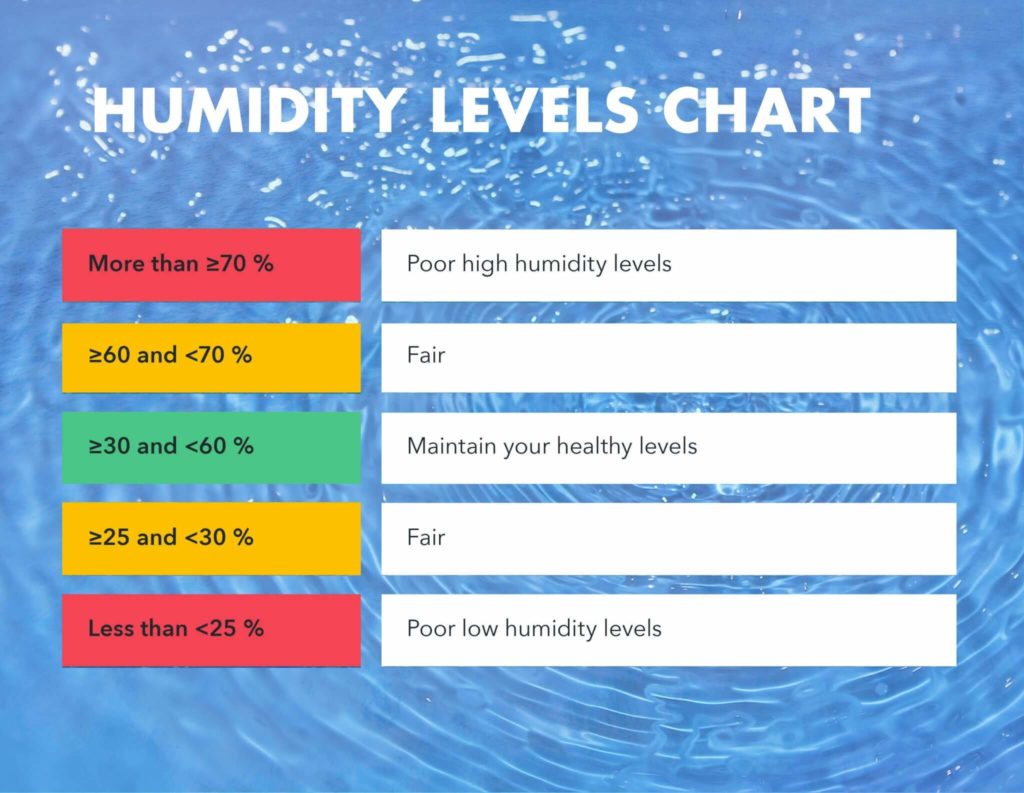No matter where you live, humidity can put a damper on your health and overall comfort. In the summer, humidity can make the heat feel even worse, causing people to feel lethargic, irritable and generally unwell. While many people think of humidity as hot, heavy and sticky outdoor air, it’s important to also consider your home’s indoor humidity levels.
What are Normal Humidity Levels?
Humidity is the measure of the level of moisture vapor suspended in the air around you. Although you can’t see it, it’s still there. The ideal relative humidity for health and comfort is somewhere between 30-50% humidity, according to the Mayo Clinic. This means that the air holds between 30-50% of the maximum amount of moisture it can contain.
The Hazards of Too Much Humidity
Too much humidity can negatively impact your comfort, home, possessions and health. When the air around you has too much humidity, your body can’t regulate its internal temperature through the process of evaporation. If you’re in a humid room that’s the same temperature as a room with less humidity, the humid room will feel warmer to you.
Too much humidity won’t just make you uncomfortable, it can also make you sick. High moisture levels encourage the growth of fungus, mold and dust mites, which can create breathing difficulties for people with asthma and allergies.
When it comes to your home, overly humid air creates a breeding ground for mold and mildew, which results in costly damage. Over time, high humidity levels can cause wood to rot and attract unwanted insects. Too much humidity also causes swelling in furniture and other items, causing them to warp.
Why Too Little Humidity is Just as Bad
Air that’s too dry can be just as damaging to your comfort, home, possessions and health as air that’s too wet. Dry air can cause your skin to feel cold and itchy and can dry out other mucous membranes in your body, leading to sore throats and chapped lips. Dry air can also increase coughing, wheezing and other breathing difficulties.
When humidity levels are too low, your home can suffer extensive damage from cracking and shrinking around door frames and molding. Anything that’s made from wood will begin to warp and bend as the dried wood shrinks in size. Wooden floors often creak more and may even separate.
How to Tell if Your Home Has Poor Indoor Humidity
Having the right level of moisture in your home’s air is critical to feeling your best and creating the perfect environment. Here are some signs that your home’s humidity level is weighing you down:
- You’re not sleeping well. If you find yourself tossing and turning at night, think about your air. Too much or too little humidity can sabotage your slumber, according to the National Sleep Foundation. When there’s too much humidity in the air, your body must work harder to evaporate sweat in order to cool itself. As a result, you might struggle to fall and stay asleep. Breathing in air that’s too dry can irritate your throat and lead to fits of coughing.
- You can’t stop sweating inside your home. It can be exhausting when you feel like you’re constantly sticky and covered in sweat. While you can’t control humidity levels outside, you have control over your home.
- You have difficulty breathing. High home humidity levels can often lead to asthma symptoms such as chest tightness and wheezing. Humidity levels that are too low can also lead to a host of respiratory problems.
Escape from Heavy, Humid Air
When the dog days of summer bring waves of sweltering heat, you don’t have to languish in hot, humid air. Talk to Peppers Heating and Air about how to turn your home into an oasis of comfort.TAGS: COMFORTABLE HOUSE



